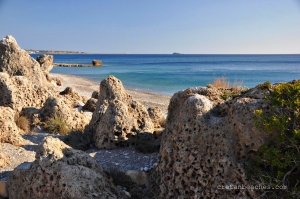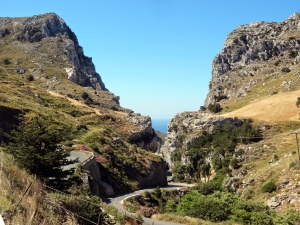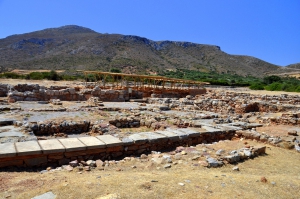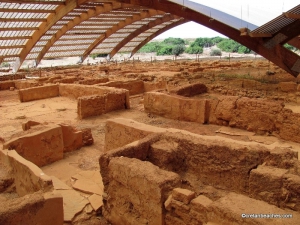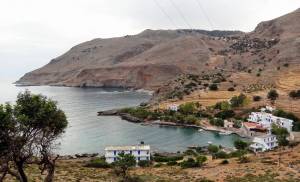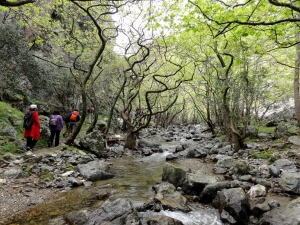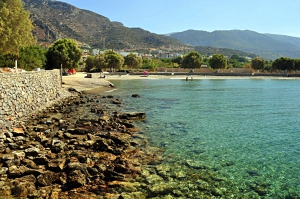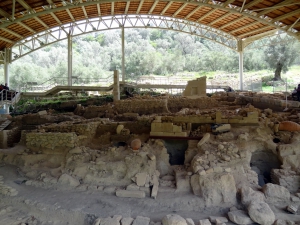The Coves of Paleochora are consecutive small bays that start 1.5 km west of Paleochora (80km south of Chania) and extend 2.5 km to the west, till Cape Grammenos. The beaches are a complex of adjacent coves with crystal clear waters and spectacular pebbles. The main road, connecting Paleochora and Koundoura, runs along the coves. For this reason, they are not preferred by nudists.
The gorge of Kotsyfos starts at Kannevos village and ends at Plakias. The starting point is very narrow with a width of about 10m, which gradually increases and reaches 600m. The total length is 1800m, and the almost vertical sides that reach a height of 600m. Inside the gorge, there is a small temple built inside a rocky cavity dedicated to Saint Nicholas.
Rousolakos is located 91km southeast of Agios Nikolaos, right next to the beach of Hiona. Here, the archaeologists have discovered an important town of Minoan Crete covering an area of more than 50 acres, which flourished particularly at the end of the Minoan Age till 1450BC.
The archaeological site of Malia is located 3km east of Malia, next to the wetland of the area and very close to the beach. It was an important Minoan city and housed the third largest Minoan palace, after Knossos and Phaestus. According to mythology, Sarpedon reigned here, who was brother of Minos and son of Zeus and Europa. Sarpedon was expelled by his brother Minos and then took refuge in Lycia in Asia Minor.
Finikas (or Phoenix) is a small harbor near Loutro of Sfakia, located 83km south of Chania. The bay is hidden 700m west of Loutro and the E4 European path crosses the area.
Kollita Gorges, i.e. Twin Ravines are located nearby the picturesque village Argyroupolis, about 22km southwest of Rethymnon city. They are named so, as they consist of two parallel canyons that end near Kato Poros settlement. Here we refer to the easternmost gorge of Moundros.
Istro(n) is located 12km east of Agios Nikolaos and 22km north of Ierapetra, very close to Kalo Chorio. It is a quiet village, situated in a lush valley full with olive groves and springs, which has been developed during the last decades. However, the development was fortunately mild, mainly due to the regional building restrictions because of the archaeological discoveries. The main growth driver of Istron is undoubtedly the emerald beaches which are scattered in three adjacent bays.
Ancient Eleftherna is located 25km southeast of Rethymno, close to the Monastery of Arkadi. The town is the most important archaeological site in the prefecture of Rethymno, which has not fully been excavated and it is expected to give archaeologists many more discoveries. The first organized excavations here started in 1985 by the University of Crete.











